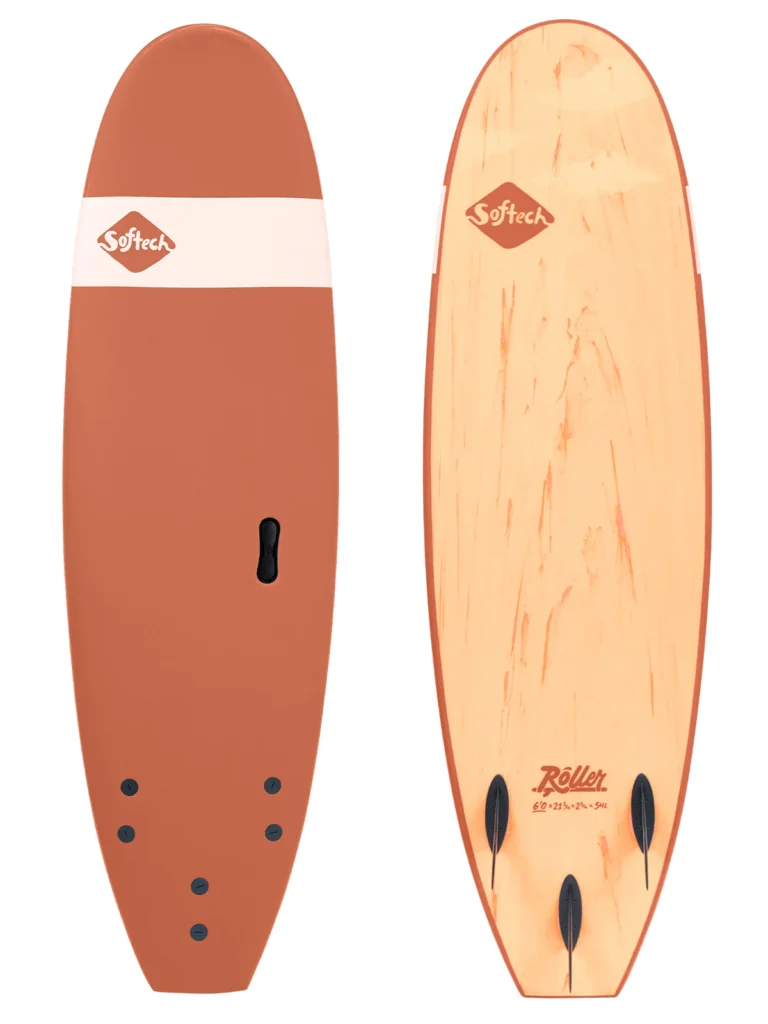Dernière mise à jour le 24 December 2023
Caught the surfing bug and ready to buy your first board? Great! But before you dive in headlong, there's one crucial thing you must remember: don't make a mistake.
C’est un peu comme choisir son premier vélo, il faut qu’il soit adapted to your level pour que l’expérience soit top ! Alors, comment choisir la planche idéale pour débuter? Suivez le guide, on vous explique tout
Understand the importance of choosing the right board for your skill level
Choosing the right board for your skill level is crucial for a successful rapid progress.
L’objectif pour vous initialement, est de catch as many waves as possible and also understanding your supportto have plus d’aisance on boards that will be smaller and easier to handle later on.
A board adapted to your level will allow you to make much faster progressand, above all, to have maximum fun!
C’est l’erreur que font beaucoup de surfeurs au début, j’ai fait cette même erreur en me mettant trop rapidement sur une planche avec peu de volume…
The best surfboards for beginners
Les planches « soft top » ou en mousse sont parfaites pour les débutants car elles sont less dangerous and easy to handle. A bit like a safety cushion, they forgive mistakes without too many injuries.
Les planches « soft top », ou foamie sont recommandées pour les enfants également pour des raisons de security and confidence également. C’est important de se sentir en sécurité pour apprécier l’apprentissage.
Foam boards are the most popular accessible in terms of price but offer less progression potential than molded or epoxy boards. As the board is softer, you won't have any reactivity, so it'll be harder to turn or pick up speed, especially if the board is long.
Epoxy boards are popular with advanced beginners because of their superior durability and buoyancy but you risk hurting yourself if you hit the board (it happens at first...). The excesses on these models are also hard, which increases the risk of cuts compared with foamboards and their soft drifts.
The worst surfing for beginners
Unsurprisingly, smaller boards, which are less buoyant and less stable, are the most popular choice. less suitable for beginners. C’est un peu comme apprendre à nager dans l’océan sans bouée… pas l’idéal pour commencer.
Common board materials include polyuréthane (PU) et l’époxy. Each has its advantages and disadvantages, but for beginners, it's best to opt for the more forgiving options.
These boards are not recommended for beginners, however, because of their lower durabilityfarting happens very quickly if you're not careful...
All our tips for buying the right board
Lhe best board sizes for your level and size
Il n’y a pas de taille « parfaite » pour une planche ; cela dépend de nombreux facteurs individuels. Dans le cas des débutants, c’est par contre plus simple, car il n’y a que quelques paramètres qui rentrent en compte, la taille et le poids.
Your first board should be at least at least 60cm taller than your height. But it also depends on your weight, as buoyancy is very important (1kg for 1 liter). If all I'm telling you is still gibberish, take a look at this table below, you'll see more clearly 😉 :
| Surfer's weight | Board size | Surfer size (cm) |
|---|---|---|
| Jusqu’à 55 kg | 5’6″ – 6’6″ / (168 – 198 cm) | 120 |
| Jusqu’à 70 kg | 6’8″ – 7’2″ / (203 – 218 cm) | 140 |
| Jusqu’à 80 kg | 7’2″ – 7’6″ / (218 – 229 cm) | 160 |
| Jusqu’à 85 kg | 7’6″ – 8’6″ / (229 – 259 cm) | 170 |
| Jusqu’à 90 kg | 8’6″ – 9’2″ / (259 – 279 cm) | 180 |
| 100 kg and over | 9’2″ et plus / (279 cm et + ) | 190 |
Please note that these measurements are approximate and are intended as a general guide for beginners.
The price I have to invest in a first board for beginners
Board prices vary according to construction quality and materials used. For a new foamie/soft top/foam board for beginners, the price ranges from 300 and 400 euros. Buying a used board can be a good option!
Our selection of the 3 best surfboards for beginners
OLAIAN - SURF MOUSSE 100: solidity and stability, the best option!

Stable, with a wide tail and a carrying handle, this is the perfect first surfboard for beginners and surf schools (we're clearly talking longevity and solidity...).
For people from 65kg upwards. Also note the triple central slat and non-slip coating.
As usual, Décathlon has the best offer for beginners. Those French sure are good, aren't they....
Price: €320
Softech - ROLLER : de l’équilibre et de la maniabilité

Une planche bien ronde(meilleur équilibre sur l’avant) avec des rails bien épais qui pardonnent les erreurs et un tail légèrement affiné pour permettre des virages plus faciles à l’arrière. C’est donc la planche parfaite pour les débutants.
En bonus, elle est dispo dans différentes colories (marron, bleu, vert, etc…) et tailles, 6’0″, 6’6″, 7’0″, 7’6″, 8’0″ 8’4″, tout est possible !
There's also a nice little handle for carrying the beast.
I also recommend this brand for funboards and intermediate to advanced surfers. I was able to test the Kyuss King Fishand the Eric Geiselman FlashLots and lots of fun in medium-high waves!
Price: €380
Catch Surf - LOG a performance-oriented shape

Bleu, gris, turquoise, marron, jaune, différentes tailles disponibles également pour ce modèle, 7’0″ et 8’0″ selon votre taille et poids.
C’est une planche qui, comme les autres au-dessus, vous offre une bonne flottabilité. Mais elle dispose d’une maniabilité supérieure aux autres modèles proposés car le tail est relativement affiné donc beaucoup plus fun !
C’est donc une planche avec un shape que je recommande aux débutants qui ont un peu d’expérience et qui veulent de la maniabilité.
C’est également une bonne planche pour les intermédiaires à avancés, à intégrer dans son quiver.
And as a bonus, funky colors!
Price: €380
Learn to surf: surfboards after your foamie
You've already got your foamie and you're wondering what to do next? Don't panic, we'll guide you through this sea of possibilities!
First board: Foamboard Longboard

As seen in our article, long boards are ideal as a first step for beginners.
These boards give you the stability you need to gain confidence at sea. We recommend starting with a longboard about 3 feet longer than the surfer.
Second panel: Hardboard

The hard boards offer better progression with more refined shapes and constructions.
Easier to handle, but a little riskier. Epoxy or molded boards are more suitable for more experienced surfers.
These boards mark the transition to more technical and demanding surfing.
Third panel: Mini malibu

Après les planches « soft top » et les longboards, les « mini malibu » de 7’2″ à 8’6″ are recommended. More maneuverability, more fun.
Price-wise, they are generally a little more expensive than foamies, but offer excellent value for money for those looking to progress.
Fourth panel: Surf Mid Length

C’est la nouvelle tendance qui se démocratise sur de nombreux peaks. De Lafitenia en passant par Uluwatu, nous voyons de plus en plus de planches de ce type.
They are longer than shortboards, but have slimmer tails.
En résumé, une meilleure rame donc de l’avance au takeoff et de la maniabilité en enfonçant le tail !
A great option for powerful waves and straight lines.
Fifth panel: Evolutionary boards and grovelers

Shortboards, usually intended for seasons with fewer waves, such as summer.
These are boards for radical turns with extra volume for easier paddling, and a slightly more generous nose and front for paddling.
These boards can therefore be a good solution for intermediate surfers. Of course, they won't be ideal for wedging large barrels, but that's not the point!
The holy grail: Shortboard

Les shortboards sont l’étape finale après s’être habitué aux planches un peu plus longues.
C’est la planche de prédilection pour ceux qui veulent s’attaquer à des vagues plus sérieuses et développer un surf plus radical.
Bonus: Funboard

Après avoir maîtrisé toutes les bases, passer à un « funboard », qui est un peu plus court et plus maniable. Les « funboards » offrent buoyancy and maneuverability.
With rounded curves, thickness and a compact format, this type of board is also great for intermediate to advanced surfers. I'm thinking of the Catch Surf Beatera compact, playful little twin.
In conclusion, it's a good idea to keep your old boards to diversify your surfing experience and build up your quiver.
Sometimes it's nice to surf with a longboard or fun board in less challenging conditions.
Each board has its own charm and purpose, and it's by exploring different styles that you'll become a complete and versatile surfer!




